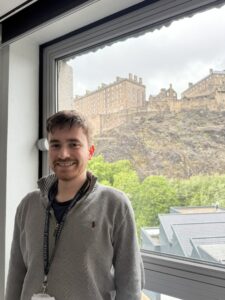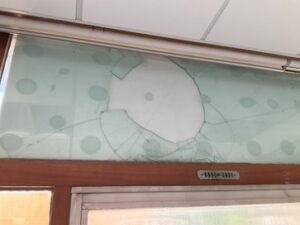When I first started as the Teaching Spaces Data Intern, I wasn’t sure I would ever get around to writing a blog post about it. I quietly hoped I might escape that part. But now, after almost a full year role, I am reflecting on my experience.

This internship has taken me through a huge range of experiences, from working with data in PowerApps and Power BI, to diving deep into Django development, presenting findings to the Teaching Spaces Oversight Group, and even sorting through thousands of room photos. It has been far more than just a data internship, it has been an amazing learning opportunity in which I have gained countless skills and been able to work on new and exciting projects.
Starting from PowerApps and PowerBI
When I first joined the team, teaching spaces surveys were being carried out using Microsoft PowerApps. My first tasks involved examining the survey data that had already been collected. There was a lot of it, but not much structure or insight being drawn from it.
To make this data more useful, I began by cleaning and analysing the survey responses. From this, I created interactive dashboards in Power BI, allowing users to quickly view trends, identify common issues, and be able to track which rooms had yet to be surveyed. This helped highlight reoccurring problems and made it easier to offer recommendations on where efforts of maintenance and upgrades should be focused on.
However, it quickly became clear that the PowerApp itself had limitations. It was slow to load due to the large volume data volume behind it, and uploading photos taken during surveys was inconsistent and manual. Photos were stored on devices and uploaded to SharePoint at the end of each day, which often led to images being placed in the wrong folders or assigned to the wrong rooms. This made integration with other systems extremely difficult.
Rebuilding the Survey System with Django
To address these challenges, I worked alongside the team to rebuild the survey app using Django, a python-based web framework. This allowed us to completely redesign the form structure and workflow. The new survey loads significantly faster and gives us full control over the layout and data handling, as now photos are uploaded with the form, and are then synced over to SharePoint following a consistent folder structure.
Additionally, we introduced conditional logic, so that users only see questions relevant to their team or the type of room they are surveying. This makes the survey experience cleaner and more efficient. The new platform also integrates survey responses with dashboards and issue tracking systems in one unified interface.
Presenting to the Teaching Spaces Oversight Group
Midway through the internship, I had the opportunity to present the work we had done to the Teaching Spaces Oversight Group, which are a committee responsible for overseeing room quality and improvements across the university. I demonstrated the Power BI dashboards, and presented some of the highlights we had found from the previous summer’s surveys.
This experience was rewarding to see how our work had real world impact and was being used to guide planning and resource allocation. It also helped build my confidence it presenting technical findings to a non-technical audience.
Exploring More Django Development
As I became more confident in Django, I was given greater responsibility for developing new features and pages across our web systems. A key focus was ensuring the tolls and websites I worked on would remain useful after my internship ended. This meant creating reusable components, ensuring the code was easy to understand and making sure the user interface was intuitive.
Building a Picture Browser and Improving SharePoint Integration
Another major part of my work involved organising the thousands of photos taken of teaching rooms since 2019. These photos were originally stored on SharePoint with no consistent naming or folder structure, making it incredibly difficult to use them effectively in any sort of automated tasks.
I implemented a hierarchy based on year and category of the issue, then manually sorted older images to fit this system. This wasn’t the most glamorous part of the role, but it was essential to ensuring that room photos could be reliably integrated in Django.
On the technical side, I developed a picture browser on the Django site, allowing users to upload photos directly through the web interface. These uploads are then automatically pushed to the correct location on SharePoint, ensuring consistency and saving a significant amount of manual effort. This integration has made a big difference in streamlining the photo management process.
Developing an Issues Tracker
With the new survey and photo systems in place, we were able to build an integrated issues tracker, a tool that automatically logs and manages problems reported during room surveys.
Previously, survey responses highlighting issues would sit in a database without any clear process for review or action. Now, each issue can be flagged and be seen with photo evidence. This added context helps the right team quickly understand the problem and decide what action to take. This system has helped transform survey data from something passive into a tool for immediate action. As can be seen in the picture below which shows an issue found and raised during the surveys and it was subsequently fixed.

Final Reflections
Looking back, I am incredibly grateful for the opportunities I have had over the past year. I have learned a huge amount, from data analysis and dashboard design to web development and SharePoint integration.
I came into this role with no front-end experience and now I am comfortable designing and deploying interactive web tools from scratch. I have learned the importance of version control (especially after accidentally deleting part of a GitHub project), how to troubleshoot complex bugs, and how to explain technical systems to a wider audience.
Most importantly, I have been supported throughout by a fantastic and knowledgeable team who were always patient with my questions and eager to help me grow. I am proud of what I have been able to achieve, and am excited to take these skills into future projects.

